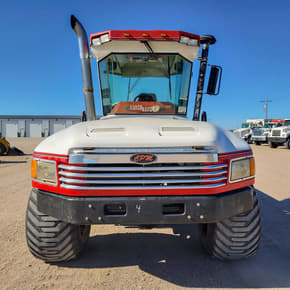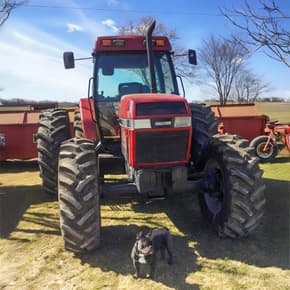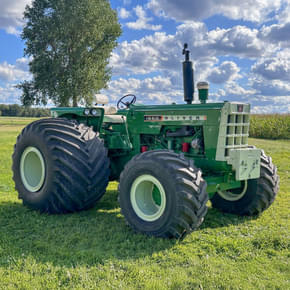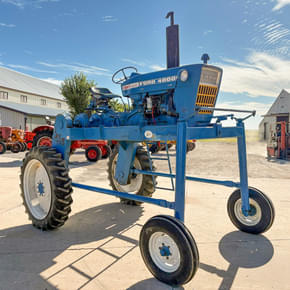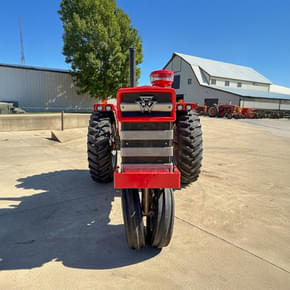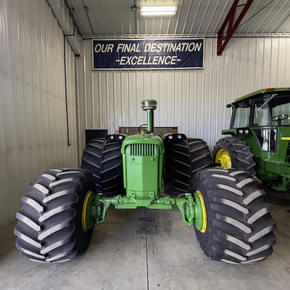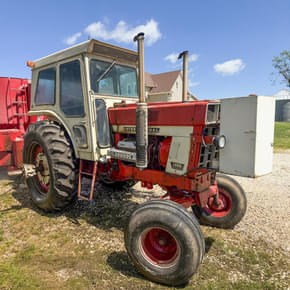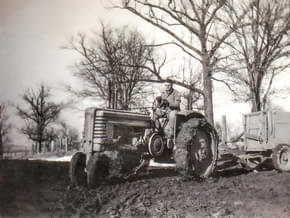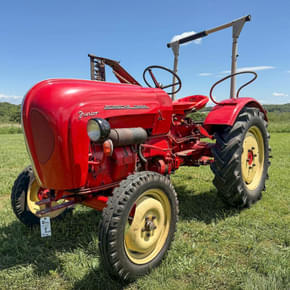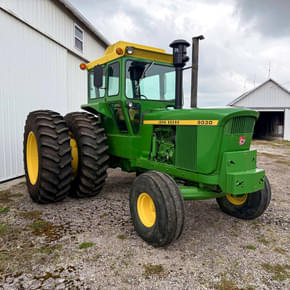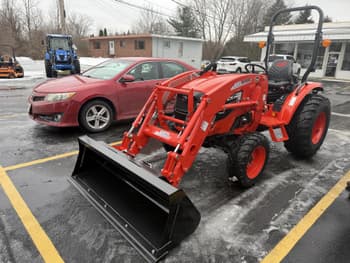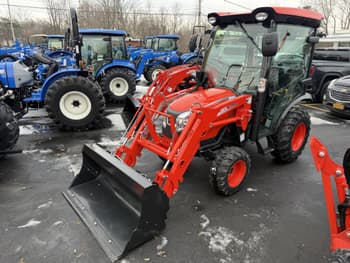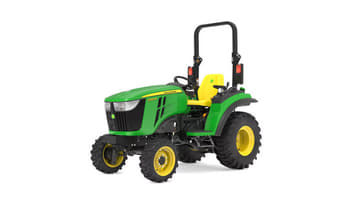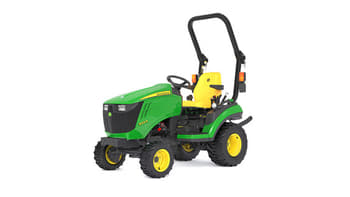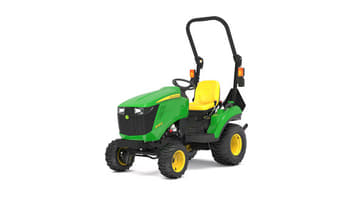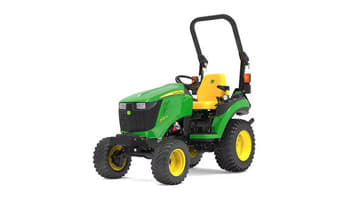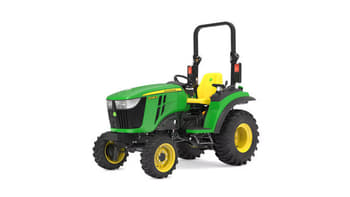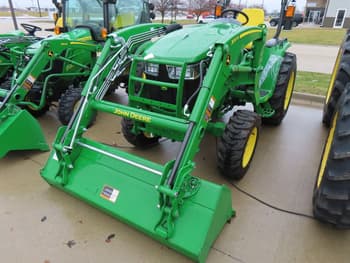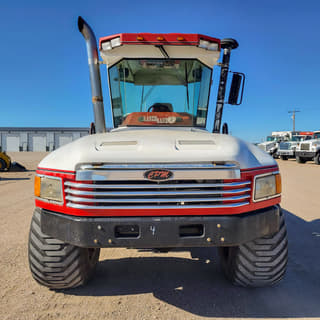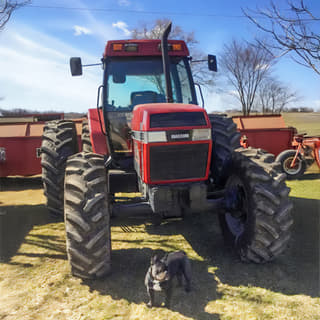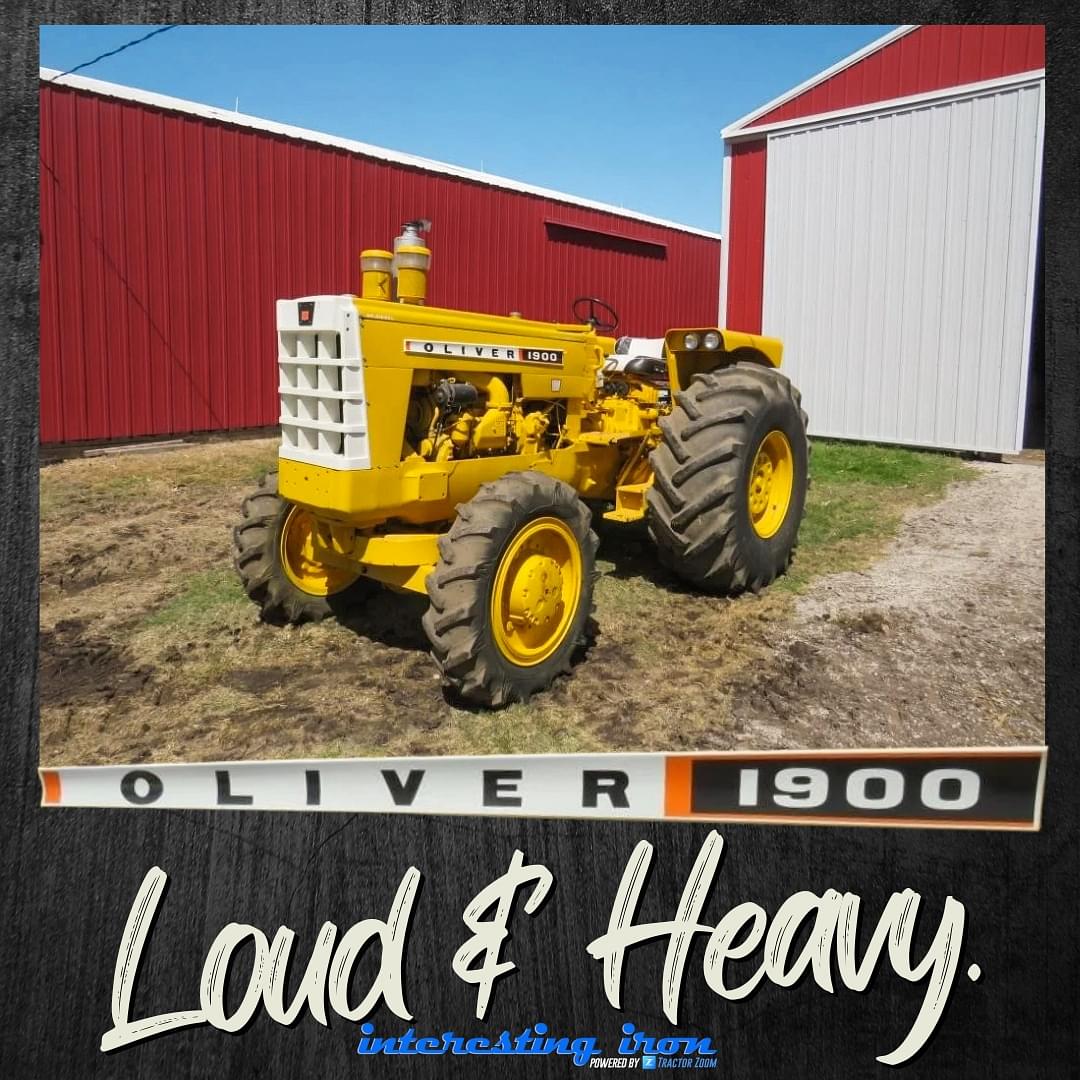
The Oliver 1900 was a barnyard bully. It was loud, obnoxious, heavy, and made no apologies for itself. It should’ve been sold with a case of shooter’s earmuffs – enough for the operator and his family, as well as the families of his two closest neighbors!
But for all the noise those tractors made, boy, they sure could put in some work.
And there’s a couple of ’em on an auction happening on the 29th just southwest of Fort Dodge, IA.
First, the sale details; then we’ll take a closer look.
Auction Date: June 29, 2022 – 11AM CDT (Online bidding is open right now.)
Auctioneer: Sale Barn Realty & Auction
Format: Onsite with online bidding – 11AM CDT start time on the auction!
Location: Lohrville, IA
Auction Catalog
Link to the 1962 Oliver 1900 Industrial FWA
Okey doke, now let’s talk big ol’ Olivers. (Well, for 1962, at any rate.)
The Backstory: No stranger to big power…
Oliver has never been shy on horsepower. I mean, they were building tractors using inline sixes for a solid 25 years before Deere did it, so being a front-runner in that game wasn’t new to them. See, the leadership at Oliver believed that they were dollars ahead if they built what made sense to build, and bought the rest. That’s why they used engines from Continental and Waukesha for decades.
Honestly, it’s a pretty smart strategy; it gives you the ability to buy the right pieces from the companies that are on the forefront in that business, while your company’s resources go into the stuff that your company does best. We’ve seen it play out pretty frequently in the history of farm equipment. It made sense then, and it makes sense now.
However, when farmers asked for more horsepower and more capability in the early 50s, Continental and Waukesha didn’t make what Oliver needed. So they turned to Detroit Diesel.
Super 99 comes out swingin’
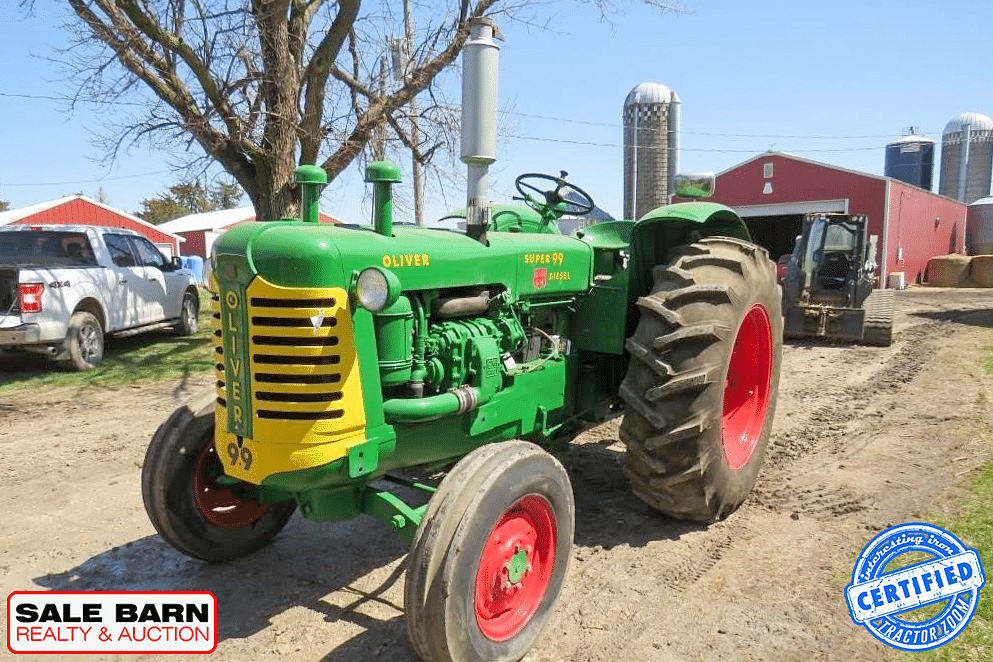
Detroit Diesel, an arm of General Motors, had been building modular two-stroke engines since the late 30s, and they’d had a lot of success. They were tough as nails and they definitely made horsepower. Oliver spec’d the Super 99 with a well-respected engine, the 3-71 (3 cylinders, 71 cubic inches each). When it was released in 1954, the tractor made over 58 horse at the drawbar! Not bad for a 3-cylinder, huh? Furthermore, at 8200 pounds, it was a heavy sucker, too! The Super 99 was rated for a 5- or 6-bottom plow. The rest of the competition couldn’t hack that!
The 990: Twistin’ the tail a little harder…
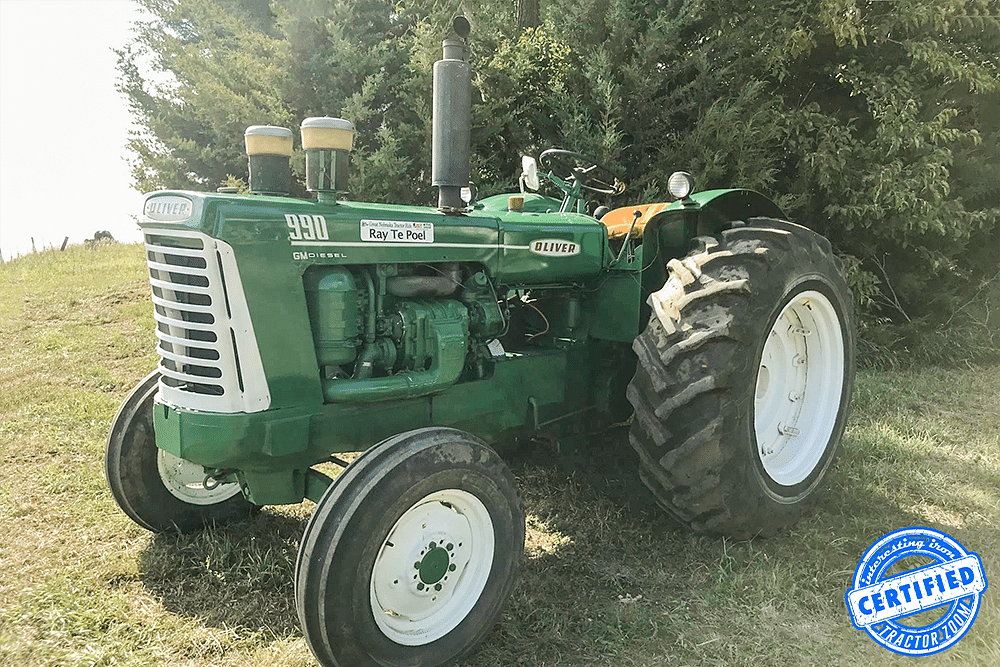
But that’s not where Oliver stopped. When they updated their Super Series tractors to the 3-Digit tractors for 1958, the Super 99 became the 990. The styling was updated a bit, the frame got beefier, and Oliver turned up the power a little. The result was pretty stout, too. 11,000 pounds, and over 61 horsepower at the drawbar! I don’t believe that the plow rating was changed, but with a little more power, I’d imagine farmers could run a bit faster through the field. Either way, it was a nice little improvement over the earlier tractors…and still miles ahead of the competition.
The 3-Digit series were sort of a stop-gap measure, because the engineers at Oliver were working on a new lineup for 1960; the Hundred Series. A thoroughly modern tractor for the modern farmer.
The 1900: Horsepower replaces the hired man…
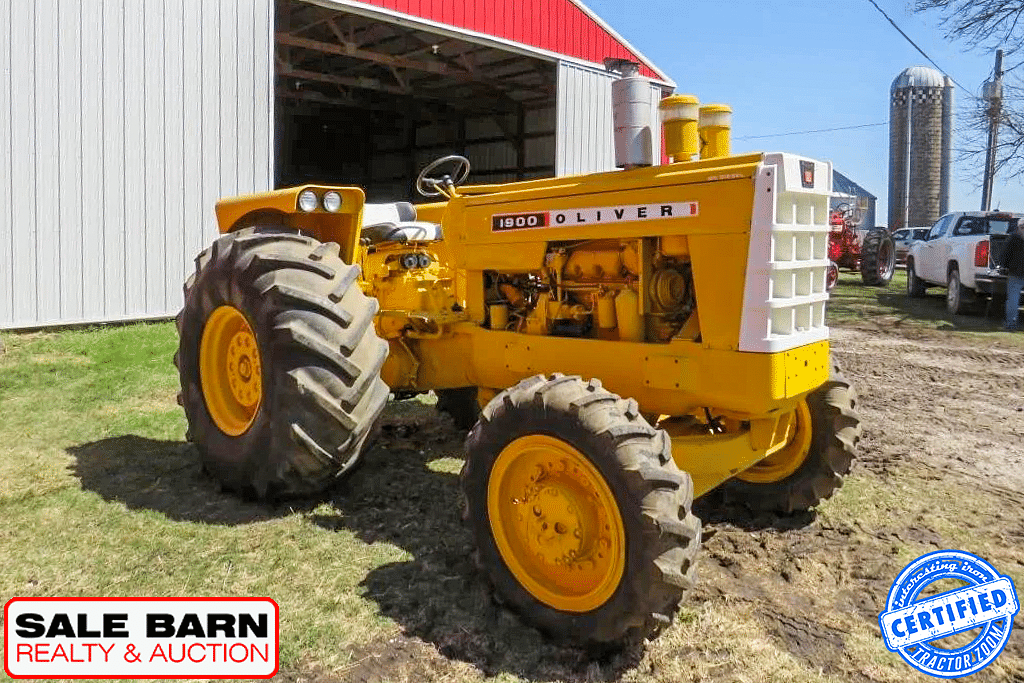
Oliver believed in listening to their customers, and when their customers told them that hired men were becoming harder to find, and more expensive to keep. So, they did what they could do. The company gave them more power, figuring that with added power, it could help offset the lack of labor.
“…it became obvious that by 1960, farmers would need extra power to farm the land that previously was farmed with the help of hired workers.” – T. Herbert Morrell, Oliver Tractors: A Chief Engineer’s Account ~ 1940-1970
The Oliver 1900 was the biggest of the two tractors launched in 1960. The 1800 was a smaller 80-horse row-crop tractor. The 1900 served as the Wheatland model, and it was a beast, tipping the scale at 12,000 pounds (and over 18,000 when fully ballasted)! The engine was a 4-53 Detroit, and while it was a hair smaller in displacement than the previous 990 (213 cubes from the 3-71 vs. 212 from the 4-53), it was designed to be run a little faster. (More on that in a second…)
Series A/B/C
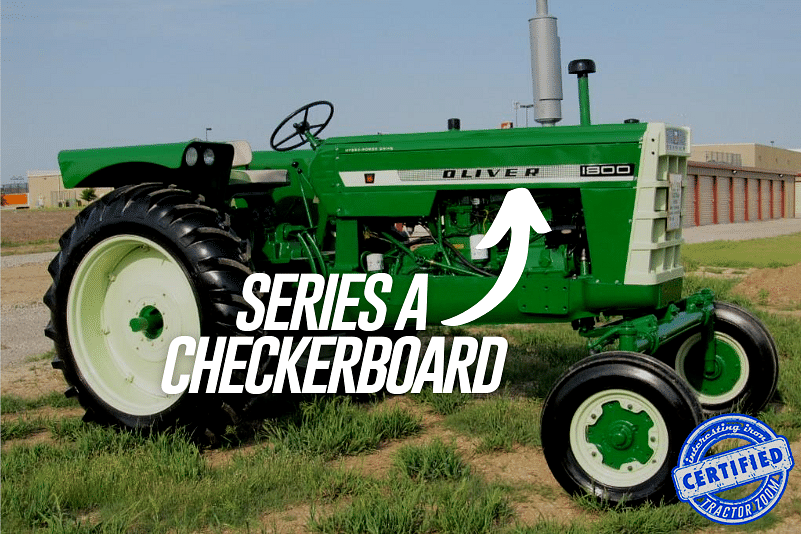
The Hundred Series released with the Series A tractors, known today as the “Checkerboard” series because of the way the badging was designed. In 1962-63, the Series B tractors saw a few enhancements, the most important of which were the introduction of the 1600 (a smaller row-crop/utility tractor), new engines for the 1800, and front wheel assist for all three models. The Series B tractors are also where the “spear” badging appeared for the first time – an idea that Oliver picked up when they started building tractors for Cockshutt, a Canadian tractor company that had recently been acquired by Oliver’s parent company, White Motor Corp. Oliver’s top brass liked the way the spears looked on Cockshutt’s tractors, so they used a similar one for their tractors! The Series C tractors, released in 1964, didn’t change much from a visual perspective, but the steering rack was improved, as were a few things in the platform.
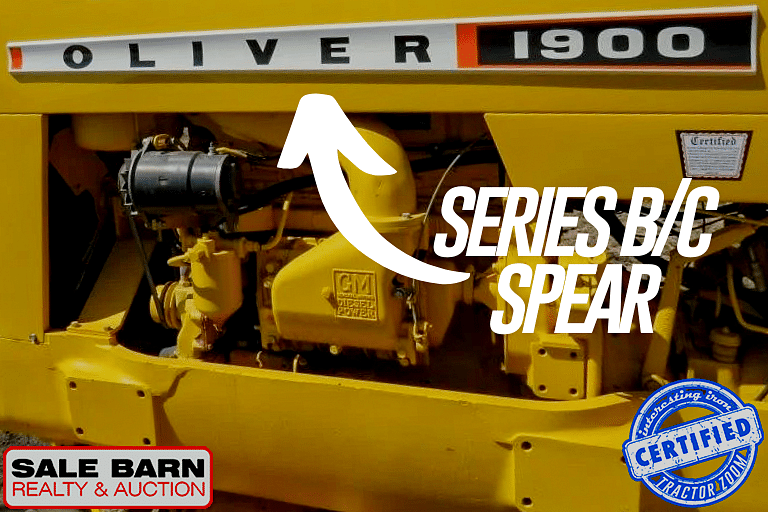
More power, baby!
When the Nebraska Labs tested the Oliver 1900 Series A in October of 1960, the 4-53 Detroit under the hood made great power; over 89 horse at the PTO and almost 83 at the drawbar. But oh, how things changed in two years. In September of 1962, the 2WD Series B made almost 99 horse at the PTO, and over 84 at the drawbar. And a year or so later, when the front wheel assist model was tested, it cranked out close to 101 horse at the PTO and over 88 on the drawbar! These may not sound like massive jumps, but they definitely made a difference in the field!
Now, let’s break out for a quick second here and talk about Detroit Diesel 2-strokes, because there are three things you really need to know about operating machines with these motors.
Detroit Diesel rules of the road…
- These things are seriously earsplitting. On a quiet spring night, if that tractor was hooked up to an 8-bottom plow working the back 40, I’ll bet every neighbor in a 5-mile radius could hear it. Maybe further out than that! If you’re going to be close to one for more than about 30 seconds, you’d best have some earplugs. (And before you tough guy farmers all decide I’m a snowflake…have you replaced the batteries in your hearing aids lately?)
- They’re thirsty. These tractors would outwork nearly everything in the field as far as brute strength was concerned, but they’re not exactly fuel sippers. Be prepared.
- There’s a specific way you have to drive them. If you’re in an open station tractor, grab a crescent wrench or a hammer out of the toolbox and bash your hand with it a couple of times, so you’re good and mad. If you’re in a semi or a cabbed tractor, you could also smash your hand in the door; that’ll work too. Then, get in/on the machine, fire it up, and drive it like you’re mad at it. Detroit Diesels don’t like to be coddled. Either go hard or go home.
Here’s a handy instructional poster. You’re welcome.
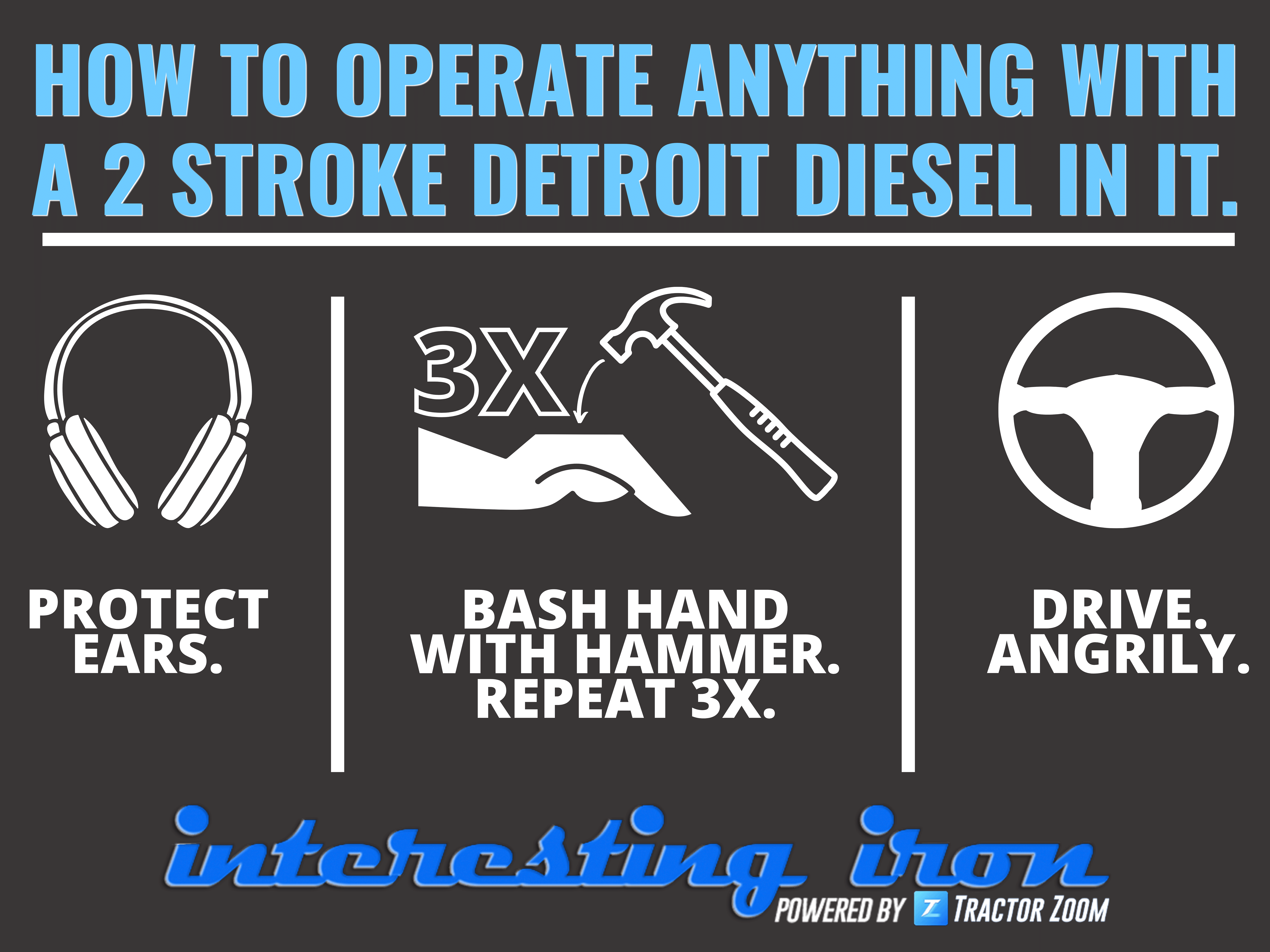
Okay, that last one was a joke…sort of. They don’t like to be coddled, that part is true. The fact is, because of the way they’re designed, these motors fire twice as often as a four-stroke. By their very nature, they sound angry. When they’re turning 2200 RPM, they sound like they’re running at more like 4400 RPM. So, even though they sound like they’re about to come apart…they actually aren’t.
Industrials
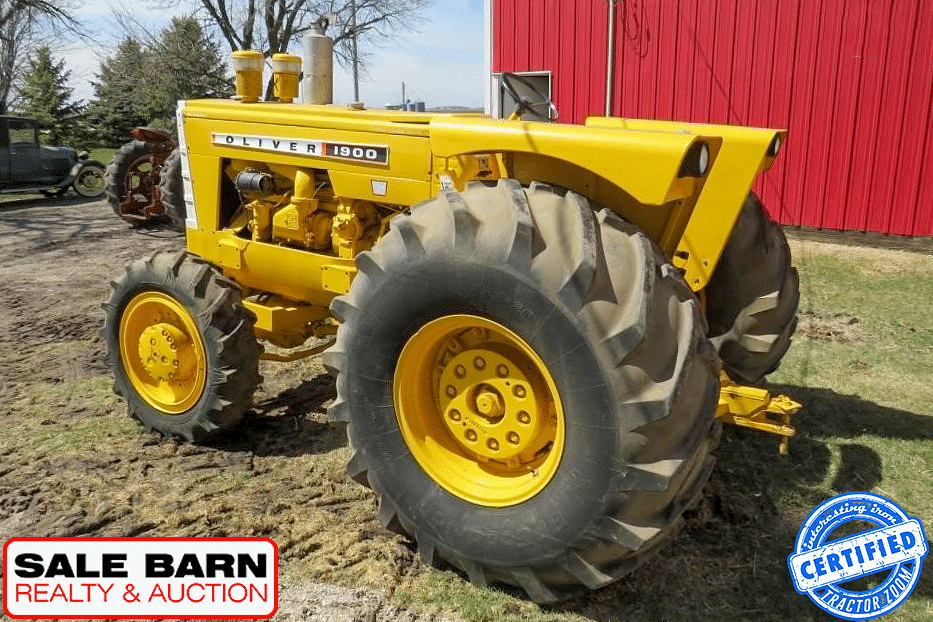
Generally speaking, when companies build industrial versions of tractors, they don’t make many major changes – just some tweaks here and there. Such is the case with the Oliver 1900. The industrials had just a hair more power, a little bit faster gears in the transmission, and a heavier front axle. One other change that you usually see on front wheel assisted tractors is shorter, squattier rear tires (23.1×26) and taller fronts (11.2×24). That’s what this tractor is equipped with, and I believe that’s the setup it shipped with when it was built in 1962.
Oliver produced the 1900 Industrials from 1960-1964, although I don’t believe I’ve ever seen a Series A tractor before. Industrial tractors don’t have an overly huge market, so production numbers were a lot lower than the ag models. In fact, I don’t think anybody’s ever gone up to Charles City and put in the time to figure out how many 1900 Industrials were actually built. I asked around a little, but nobody I spoke with had ever heard or seen the numbers. I’d be surprised if they made more than 200 of ’em, though.
Sales
Oliver decided to introduce the Hundred Series to their dealers the week before Thanksgiving in 1959. They flew their dealers in to Waterloo, IA for a two-day expo where the sales team really pulled out the stops. It wasn’t quite as big as the way Deere would do it with the launch of the New Gen tractors, but it was close. The big entertainment for the show were the Oliverettes. Eight Charles City housewives (and a couple of alternates) hand-selected by the company paraded around the Hippodrome in Waterloo on Oliver 770s in a square-dance routine they’d been practicing for months. It was also a subtle reminder to the dealers that the tractors they still had on the lot were agile and easy to drive.
(My friend Sherry Schaefer devotes nearly a full page to the Oliverettes in her book, Classic Oliver Tractors. It’s an excellent read and a terrific account of the complex history of the company. Well worth adding to your bookshelf, as far as I’m concerned!)
From the Oliverettes to the introduction of the tractors, the launch was a big success. It created buzz amongst the dealers immediately, and probably gave them something extra to be thankful for a week later! (Based on what I’ve read about the late 50s, almost every brand’s dealer channel felt like the lineups were getting really stale. They were all itching for something fresh and modern to sell!)
When the tractors rolled out to the dealer lots in the spring of 1960, sales were definitely brisk. Farmers liked the new look and loved the power!
The Oliver 1900 Industrial FWA you can buy next week…
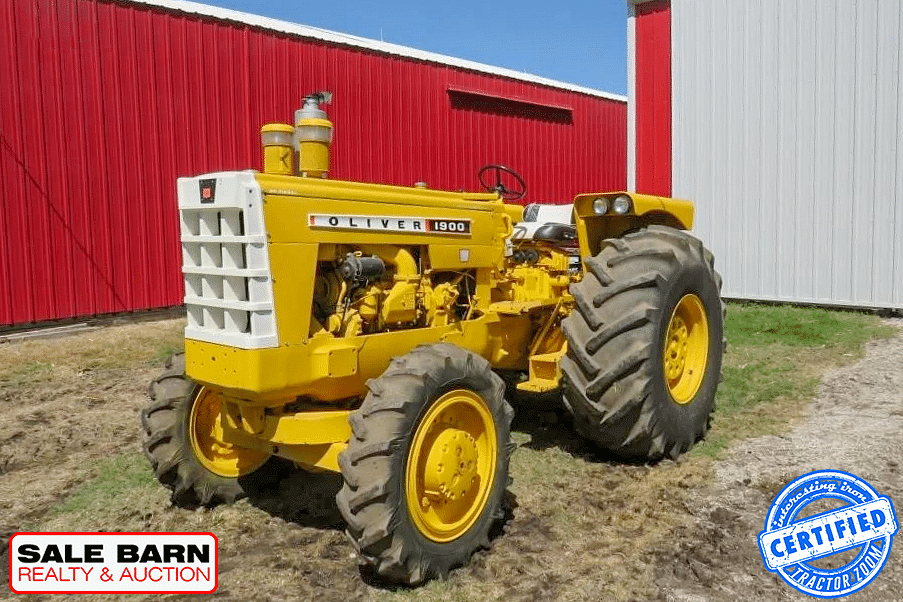
This tractor is part of a pretty large tractor collection owned by Paul Vogel of Lohrville, IA. Including the non-runners, I believe there are 60 tractors on the sale! He’s got some pretty rare ones, too – that beautiful Super 99 up above, a 990 in the barn, a FWA 1855 (that I believe is one of 191 built), a nice 2150, a 2655, and the list goes on! There’s a lot of neat stuff at this sale, and if I can, I’m going to try to get up there for photos and video!
What’s it worth?
Absolutely no idea. They come up on auction so rarely that it’s awful tough to get an idea of what it might sell for. I talked briefly to Chris Losey (he’s got a terrific YouTube channel called That Oliver Guy) and he suspects that it could be the bargain buy of the day. In his experience, Oliver 1900 Industrials tend to go for a little less than their green counterparts. See, typically, the industrials don’t have hydraulics, and that’s a turnoff to some collectors. This one, however, does have them…but it doesn’t have a 3-point hitch.
So honestly, I’m really not sure where to ballpark this tractor. $20-23K, maybe?
Either way, it’ll be fun to watch this one sell, and I’m looking forward to getting out of the office and heading up there! (I’ve got a buddy who’s adamant that he’s bringing that 2655 home with him come heck or high water. He’s been wanting one for years and I think he’s pretty serious about this one! If he gets it, you can bet I’ll put him on camera to talk about it!)
Here’s the auction details one more time.
Auction Date: June 29, 2022 – 11AM CDT (Online bidding is open right now.)
Auctioneer: Sale Barn Realty & Auction
Format: Onsite with online bidding – 11AM CDT start time on the auction!
Location: Lohrville, IA
Auction Catalog
If you’re there at the sale, look for the big fella in a blue Tractor Zoom hat!
Recommended reading on Oliver:
Classic Oliver Tractors – Sherry Schaefer
Oliver Tractors: A Chief Engineer’s Account ~ 1940-1970 – T. Herbert Morrell
Oliver Heritage Magazine – 3 Point Ink

